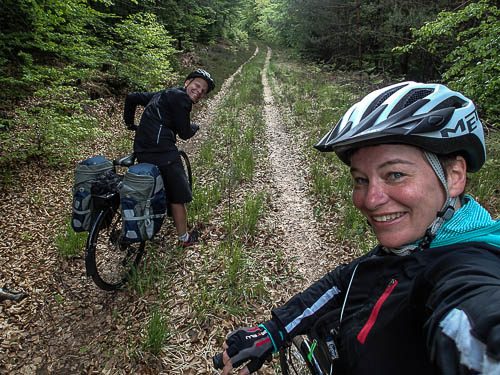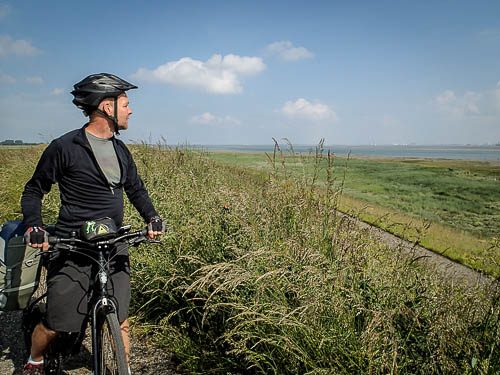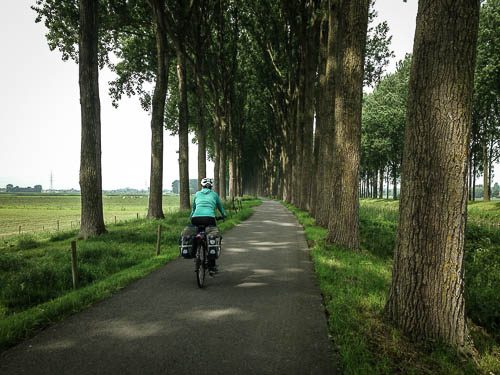Cycle Tour Europe: Finding Our Way
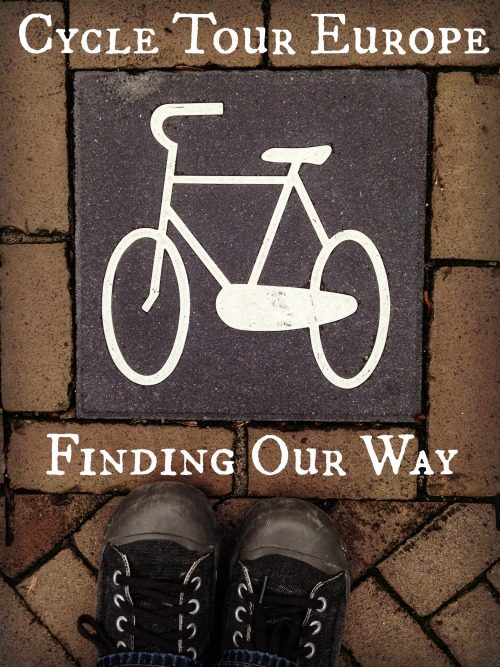 Of the three formidable tasks in cycle touring – determining where to go and how to get there, finding a place to stay, and deciding what and when to eat – the first and second combined to be the most work. (Primarily because, when you cycle that much, you will eat just about anything at just about any time!)
Of the three formidable tasks in cycle touring – determining where to go and how to get there, finding a place to stay, and deciding what and when to eat – the first and second combined to be the most work. (Primarily because, when you cycle that much, you will eat just about anything at just about any time!)
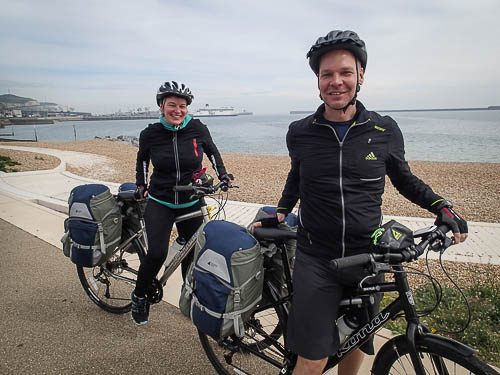 Europe has plenty of well-marked velo routes, but our itinerary (such as it was) never seemed to sync with many of them. We certainly found ourselves on many bike paths but we never simply followed one marked route for very long. Instead, it was a combination of deciding the long term destination – for example, the Vimy Ridge Memorial in northern France – and then finding a route to there over a number of days.
Europe has plenty of well-marked velo routes, but our itinerary (such as it was) never seemed to sync with many of them. We certainly found ourselves on many bike paths but we never simply followed one marked route for very long. Instead, it was a combination of deciding the long term destination – for example, the Vimy Ridge Memorial in northern France – and then finding a route to there over a number of days.
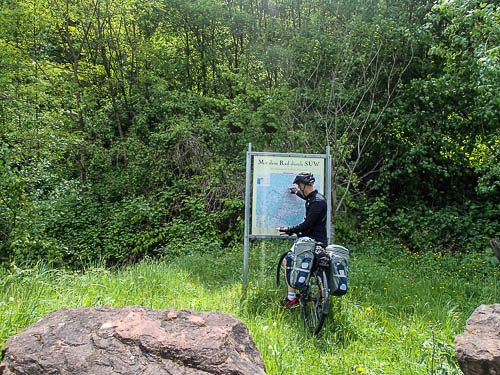 A quick series of questions usually determined this for us:
A quick series of questions usually determined this for us:
- What is the terrain like? This helps us decide how far we can go in a day. If it’s flat and smooth we can go a lot further than if it’s hilly.
- What towns are there along the way? The ‘no camping’ rule means that we can’t just stop whenever we are done for the day – we need to make it to civilization at some point. In some areas, such as northern France, the distance between towns is farther and so greatly impacts our ‘how far can we go’ decision.
- Which of those towns have reasonable places to stay? Once we’ve decided on a possible distance, and a town to stop in, then we look for a place to stay. It is certainly possible to not book ahead but we found that it caused us a great deal of stress to not know where we were staying for the night. The idea of rocking into town at the end of a long day of cycling and trying to find something that fit our budget and comfort levels just did not appeal – we needed a destination, a determined stopping point, where we knew we could shower and rest and it wouldn’t break the bank. I usually looked in the town we had agreed upon and, if I couldn’t find what I was looking for, then I would start looking at the smaller towns on either side until I found something.
What Tools Did We Use?
Traditionally, cycle tourists use paper maps for navigation. The problem with paper maps for longer term trips (besides the fact they’re made of paper and it rains) is the weight and room they take up. You’ll need maps in the 1:50,000 scale in order to really see where you are, and where you’re going – they don’t cover much ground so you’ll need a lot of them!
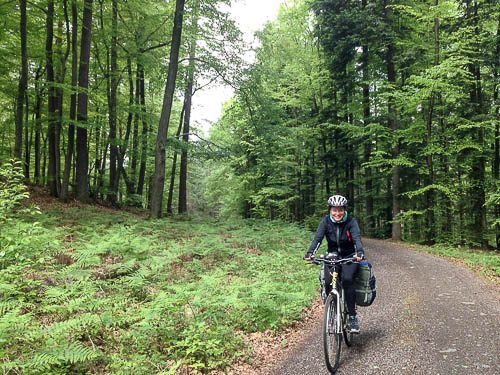 We wanted to take advantage of technology as much as possible and thought we could use our trusty iPhone and Google Maps to lead the way. Then we realized that we would be crossing borders essentially in the middle of nowhere – where were we going to get a local SIM card? There would be no vending machine at the border in the middle of a farmers field!
We wanted to take advantage of technology as much as possible and thought we could use our trusty iPhone and Google Maps to lead the way. Then we realized that we would be crossing borders essentially in the middle of nowhere – where were we going to get a local SIM card? There would be no vending machine at the border in the middle of a farmers field!
Our cycling friend in London offered up a great solution. He was using a GPS unit to find his way and recommended the Garmin Edge Touring Navigator to us. After learning more about it from him we quickly made our way to the local bike shop to get one for ourselves.
 It worked brilliantly. Jason plotted our route on the Garmin website and then uploaded the route to the device. While riding we simply followed along. If we went off route for any reason he could see the underlying map to self-navigate or to get back on track. It also recorded our actual route; KM’s covered, time actually spent moving, time spent not moving, total time, and elevation changes.
It worked brilliantly. Jason plotted our route on the Garmin website and then uploaded the route to the device. While riding we simply followed along. If we went off route for any reason he could see the underlying map to self-navigate or to get back on track. It also recorded our actual route; KM’s covered, time actually spent moving, time spent not moving, total time, and elevation changes.
When we needed a larger overview, wanted to know exactly where we were, or were looking for a beer or lunch spot, we would pull out the phone and use Google Maps to help out. The combination worked really, really well.
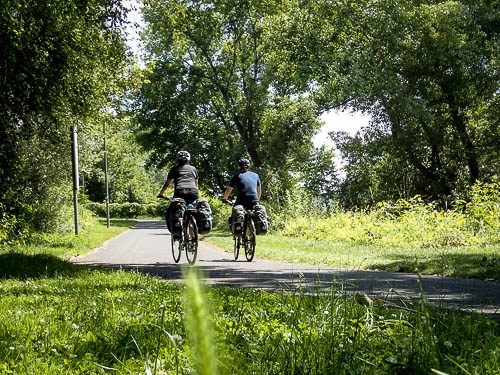 To support all this technology we carried an external battery. The HyperJuice Micro is the size of a mans wallet but carries enough power to recharge the phone three times over. We obviously charged everything up every night but there were some longer days where the power was getting low and it was a relief to know that we had a back up to rely on. We didn’t use it often but we were happy to have it when we did use it.
To support all this technology we carried an external battery. The HyperJuice Micro is the size of a mans wallet but carries enough power to recharge the phone three times over. We obviously charged everything up every night but there were some longer days where the power was getting low and it was a relief to know that we had a back up to rely on. We didn’t use it often but we were happy to have it when we did use it.
Finding Places To Stay
Accommodation isn’t traditionally part of navigation but, when where you can stay determines where you go, it becomes an important part.
Believe me, you can spend hours in the rabbit hole of finding the perfect place to stay. Checking out tons of booking sites, reading all the reviews, and determining the minute differences between Hotel A and Hotel B.
Or, you can write out a list of criteria that defines your perfect place and then stop looking once you’ve found it. Just stop. If you think there is something better out there then you must be missing something on your criteria list. If it meets all your criteria then it must be perfect. Stop. Looking.
Our criteria for this trip included:
- Budget – it’s always #1
- Proximity to our intended destination
- Walking distance to food and drink – we did not want to get on our bikes again after showering
- Breakfast included – so we could fuel up and get going in the morning
- Wifi available
- Decor/Style – will we feel comfortable there? Funny, this is becoming more important the more I travel (and the older I get). If we stay in a shit place I just get cranky and don’t want to spend any time there. A nice place = a happy Gillian. 🙂
- Bike storage – although I stopped worrying about this pretty early on. We’re in Europe, lots of people bicycle everywhere. Every place we went, except one, found a safe and secure place for us to store our bikes. One place, right near the Frankfurt train station, wanted us to leave our bikes in the main, public, parking garage around the corner. Yeah, right. We had to convince him to let us schlepp them down stairs to their utility room for the night.
We stayed in some really interesting places; hundred year old inns, rustic farmhouses, apartments perched overlooking valleys, and cute and cozy little bed and breakfasts.
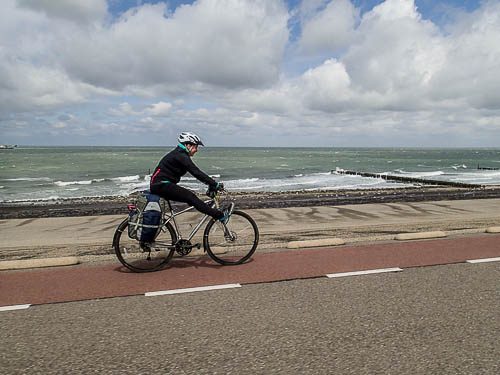
I started out this trip using a number of hotel/hostel/pension/B&B/guesthouse booking sites. In the end I used Booking.com almost exclusively. I like their website experience, the selection of properties, the on-site reviews, the payment process (pay on arrival, not before hand) and that, most often, I could cancel for free almost up until the day of arriving. It was rare that I couldn’t find anything on there and had to use another, usually more local, site to find a place. I also liked that, as a registered user, I was privy to specials and ‘Genius’ deals that often meant we could stay in a property that would normally be out of budget. Score! Note: I tell you this because it’s honestly what I found was best. I’m not paid to say this nor do I get a commission if you use them. I just like them. A lot.
For longer term stays I used AirBnB.com to find apartments. They seem to have the best selection, are well used so have lots of reviews, and their website is easy to use. What I HATE about them is the booking fee. For longer term stays the booking fee adds a few cents to each night but for shorter stays it sometimes pushed a place to the edge of our budget. Not cool. HomeAway.com is a good alternative with no booking fees, but their selection is not as good. Shameless Plug: I wrote all about finding the perfect apartment in my book How to Find the Perfect Vacation Rental. Check it out.
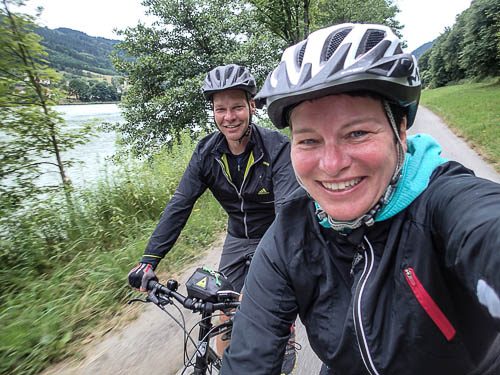 All-in-all it wasn’t that hard. Yes, it was a lot of work and took up a lot of time but it wasn’t that hard to figure it all out. It would be even easier if you decided to stick to one, or two, of the main velo routes. They are well marked, pass through some beautiful countryside, and have great cycling infrastructure alongside.
All-in-all it wasn’t that hard. Yes, it was a lot of work and took up a lot of time but it wasn’t that hard to figure it all out. It would be even easier if you decided to stick to one, or two, of the main velo routes. They are well marked, pass through some beautiful countryside, and have great cycling infrastructure alongside.





